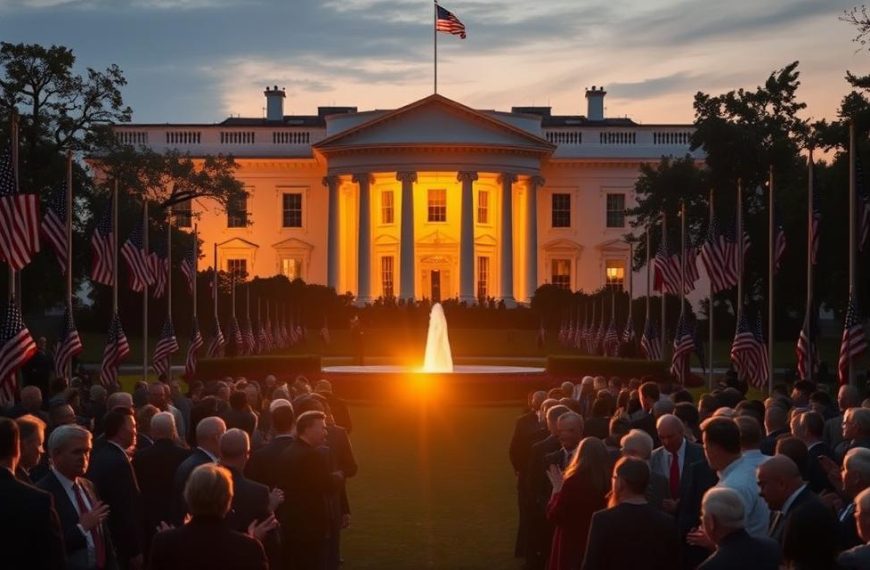On January 23, 2025, President Trump issued an executive order aimed at “Strengthening American Leadership in Digital Financial Technology.”
This significant move acknowledges the crucial role the digital asset industry plays in innovation and economic development within the United States.
The executive order provides a framework for the new administration’s approach to the cryptocurrency sector, potentially positioning the United States as a global leader in digital financial innovation.
For investors, this directive signals a potential shift in how digital assets are regulated, with implications for the entire industry.
Overview of Trump’s Crypto Executive Order
Trump’s crypto executive order, issued in January 2025, marks a pivotal moment in U.S. financial regulation. This directive has significant implications for the cryptocurrency market and investors alike.
Key Goals and Objectives
The executive order aims to establish a comprehensive framework for the regulation of digital assets. Key objectives include promoting innovation, protecting investors, and maintaining the stability of the financial system. The order also seeks to ensure that the U.S. remains competitive in the global digital asset market.
- Promoting the development of digital assets
- Enhancing investor protection
- Maintaining financial stability
Timing and Context of the Order
The timing of the executive order, just days after Trump’s inauguration, underscores the administration’s commitment to prioritizing cryptocurrency policy. The order follows a series of pro-crypto events, including the “Crypto Ball,” and significant changes at key regulatory agencies.
| Event | Date | Impact |
|---|---|---|
| Trump’s Inauguration | January 2025 | Marked the beginning of a new administration with a clear stance on cryptocurrency. |
| “Crypto Ball” | January 2025 | A high-profile event signaling support for cryptocurrency. |
| Executive Order Issued | January 23, 2025 | Established a new regulatory framework for digital assets. |
The executive order has been issued at a time when the global competition in digital asset innovation is intensifying. Understanding the context and timing of this order is crucial for investors seeking to navigate the evolving landscape of U.S. crypto regulation.
The Working Group on Digital Asset Markets
A significant component of the recent executive order is the formation of the Working Group on Digital Asset Markets, tasked with critical responsibilities.
Composition and Leadership
The Working Group is composed of various stakeholders from different government agencies. Leadership is likely to be determined by the specific objectives and tasks assigned to the group. The diverse composition ensures a comprehensive approach to digital asset market regulation.
Responsibilities and Deadlines
The Working Group is tasked with evaluating the potential creation and maintenance of a national digital asset stockpile. They must propose criteria for establishing such a stockpile, potentially derived from cryptocurrencies lawfully seized by the federal government through its law enforcement efforts. A detailed report is expected within a specified timeframe.
| Task | Deadline |
|---|---|
| Evaluate national digital asset stockpile | Within 6 months |
| Propose criteria for stockpile establishment | Within 9 months |
Potential National Digital Asset Stockpile
The concept of a national digital asset stockpile represents a novel approach in government cryptocurrency policy. This stockpile could be derived from cryptocurrencies seized through federal law enforcement efforts, creating a unique source of digital assets for the government. The Working Group must consider the implications of such a stockpile on market dynamics and investor legitimacy.
The potential creation of a national digital asset stockpile could signal increased legitimacy for certain cryptocurrencies and potentially impact their valuation. The Working Group’s report will be crucial in determining the feasibility and structure of such a stockpile.
Trump Crypto Executive Order vs. Biden’s Approach
A comparison of the executive orders on cryptocurrency issued by Trump and Biden reveals stark contrasts in their strategies, reflecting fundamentally different views on the role of government in digital currency regulation.
Revocation of Previous Measures
Trump’s executive order explicitly revokes certain measures introduced by the previous administration, signaling a significant shift in policy direction. This move is seen as a step towards creating a more favorable environment for private sector innovation in the cryptocurrency space. The revocation includes policies that were deemed too restrictive or not aligned with the current administration’s priorities.
Ideological Differences in Approach
The two administrations have taken diametrically opposed positions on Central Bank Digital Currencies (CBDCs), reflecting different ideologies on government’s role in digital currency. While Biden’s directive focused on exploring the potential of a US CBDC to maintain the dollar’s global role, Trump’s order bans CBDC development, favoring dollar-backed stablecoins instead.
Stance on CBDCs and International Collaboration
The difference in approach extends to international collaboration, with Biden emphasizing the need for harmonized global standards, whereas Trump’s order suggests a more U.S.-centric regulatory path. The implications of these different stances are significant for U.S. crypto companies operating in global markets and for how international regulatory developments might affect U.S. investors.
- The Biden administration actively participated in international forums on digital asset regulation.
- Trump’s order promotes dollar-backed stablecoins as the preferred mechanism for extending dollar dominance.
- The United States is at a crossroads in determining its approach to cryptocurrency regulation.
Future Outlook for Cryptocurrency Markets
The United States government continues to shape the future of cryptocurrency, and investors must stay informed about the implications of the Executive Order. As the administration prioritizes speed, competitiveness, and regulatory clarity, the United States is poised to become a global leader in blockchain and cryptocurrency technologies.
The Executive Order sets the stage for potentially significant changes in the cryptocurrency market landscape, with both short-term and long-term implications for investors. The Working Group’s forthcoming report and recommendations will be crucial in shaping the long-term regulatory framework for digital assets in the United States.
Investors should monitor developments closely, particularly the Working Group’s recommendations and subsequent regulatory actions, to identify emerging opportunities and risks in this evolving landscape. For more information on the Executive Order and its implications, visit Pillsbury Law’s insights.
As the regulatory landscape continues to evolve, investors should remain aware of the potential risks and opportunities associated with digital assets and the impact of the Executive Order on the market.










